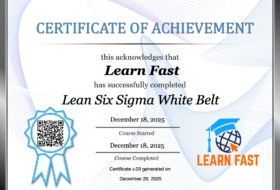The importance of Maintenance
Maintenance is about the avoidance of loss in its widest sense. An organization must therefore first determine its strategy for maintenance then deliver it at the tactical level.
The strategic issues for maintenance are in delivering safe and reliable operation of an organization’s capital assets. The aim is to strengthen the organization’s financial performance by maximizing the supply of productive capacity whilst minimizing the danger of unplanned and undesired events. The latter could include avoiding injury to people, both employees and therefore the general public; damage to the environment; loss of operating materials, and damage to capital assets. Other targeted benefits of an efficient maintenance strategy would be improved service to customers and therefore the avoidance of adverse publicity.
Alternative Approaches
There are a variety of approaches to maintenance management and the issues of resources and effectiveness are significant to each of them. One thing that can not be avoided is that a comprehensive review of the maintenance requirements can and should be a serious task. Any worthwhile exercise requires considerable thought, time to carry out, and demands significant staff and physical resources. However, there is more than one approach to analyzing the maintenance needs of an operation. The most rigorous uses a quantitative approach, demands the highest resources, and is certainly required for the final analysis of the highly hazardous plant. This guide and associated training package focus on the alternative qualitative approach which has lower resource requirements. It is aimed at the identification and assessment of critical systems within a lower hazard plant and for use during the early stages of assessing a higher hazard plant.
The rigorous quantitative approach, typically uses Fault Tree Analysis (FTA), within a methodology based on Failure Mode, Effects and Analysis (FMEA). This allows other factors such as human error to be taken into account. However, the analysis is both complex and time-consuming. It must be used for the analysis of the major hazard areas within a plant but is less appropriate for dealing with the great number of lower-risk areas to be found in the majority of the Process Industry’s plants. This approach also requires application by staff who have had extensive training and experience in reliability analysis.
The simpler qualitative approach is still based upon FMEA but is more suitable for applying to the lower hazard areas. The methodology is considerably less complex than FTA, and, given appropriate but relatively small amounts of training, lends itself to an application by local analysis teams so long as they know the plant well. This approach sits well with a participative, team-based company culture because this can more easily draw on the experience of all levels of staff on site. It also allows the workload to be spread, reducing the time to produce its recommendations, and gaining commitment to their implementation.
Qualitative methods are also applicable as an initial screening process for the major hazard areas referred to above. They will allow identification of those elements which require quantitative assessment whilst allowing the simpler qualitative methodology to be applied to other parts of the operation.
Qualitative analysis of criticality can be applied from the earliest stages of a capital project to identify the maintenance priorities in the process and mechanical design stages. This approach sharpens the focus on the critical systems and plant items so that key maintenance or design-out issues can then be tackled before major costs have been incurred. The principles of assessing criticality at the design stage are the same as those for assessing it in an existing plant and so this Guide and associated Training Package do not treat them separately.
Once the qualitative approach has identified the critical items, it is necessary to choose from the range of maintenance policies available, determine the required maintenance frequencies, and then integrate these into the overall maintenance schedule for the whole plant. Reliability Centred Maintenance (RCM), or other similar techniques, can be used to produce detailed listings of the maintenance requirements for all the physical assets in a plant. This is based on the operating context of each one and is done using an approach similar to FMEA. It usually requires consultants to facilitate it and extensive time commitments by trained in-house staff to pursue it. Although techniques like RCM can be very useful, they are too detailed for our present purpose. We have taken an approach that is soundly based in theory but is again qualitative. It also relies on the experience of the team carrying out the assessment.
The considerations involved in choosing a maintenance policy are dependent on the plant’s “work culture and organization”. The extent to which a plant uses a team-based approach, i.e. one which generates wide employee involvement, markedly affects the responsiveness and cost of maintenance. There are many of these team-based approaches, Total Productive Maintenance (TPM), Total Quality Management (TQM), Self Managed Teams (SMT), New Work Systems (NWS), etc. However, for the purposes of our qualitative approach, we will use TPM to represent the others when distinguishing between team working cultures and traditional organization and practice.
Aim of the Guide
The target readers are process and maintenance professionals plus team working staff. The aim is to provide a common starting point for each, so they can understand the perspectives of the others when involved in deciding maintenance policy, developing maintenance schedules, and pursuing continuous improvement initiatives.
The approach is deliberately simplified and qualitative. Its aim is to facilitate a quick but confident overview of the criticality of a plant’s key process systems and to enable a preliminary but systematic proposition of appropriate maintenance schedules. The approach does not replace the need for in-depth quantitative analysis in the areas of high criticality – in fact, it should allow these areas to be identified early in any assessment and thus ensure they are given their due higher priority and attention.
Those areas shown to be of low criticality are not ignored but actively chosen for less attention, whilst recording why this is so. This approach allows the appropriate maintenance policy and schedule to be given to each item, no matter what it’s criticality. Further, because a systematic approach has been followed, the documentation created can then be used as the basis for monitoring maintenance performance and identifying further improvements.
Overview of the Qualitative Approach
A key duty of management is to plan for high productivity whilst minimizing unplanned losses. An essential feature of executing this duty is therefore to ensure up-to-date information of the key process systems by initiating assessment studies and then providing leadership plus resources for executing their progress and applying their findings.
Any study aimed at producing effective maintenance schedules must have three parts:
- setting up the study
- assessing the process criticality
- determining the maintenance schedules
This guide covers these three parts separately, each providing an introduction to the concepts involved, a flowchart of the methods to follow, and notes on the key issues to address.
Worked examples are given in Appendix 2 to help interpret the concepts and illustrate how to use the methods in practice. The examples have been taken from real process plants but molded into a hypothetical batch plant for specialty chemical production. Despite the rather narrow scope of this example, the authors felt it was better to take the same plant through the whole assessment and only illustrate other applications, such as bulk chemical manufacture or final compounding and packing operations, as part of the explanation of the concepts in the main text.
In Part 1 – the scope and objectives of the assessment study need to be defined and the team doing the work chosen. The team will then identify the key process systems and the critical items associated with them. They will also need to gather the relevant technical information.
In Part 2 – the modes of failure and consequences are evaluated for each key item and the criticality rating defined.
In Part 3 – the alternative maintenance policies are assessed for their appropriateness and the resulting maintenance frequencies are then compared for viability against the criticality ratings for each process duty. A compilation of maintenance schedules is made for the whole plant and an audit system set up to ensure its effectiveness and pursue any potential for further improvement.









